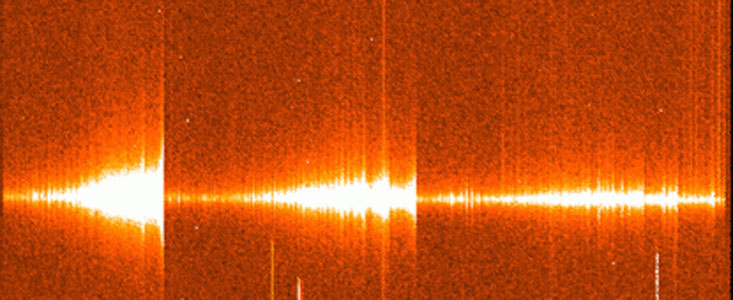Nota de prensa
The Swan Bands in Bright Comet 1995 Q1 (Bradfield)
21 de Agosto de 1995
Observations of Comet 1995 Q1 (Bradfield) were again made at La Silla last night (20 - 21 August 1995), but were hindered by high winds and the fact that the comet is rapidly approaching the Sun.
Another spectrum was obtained by Alain Smette (Kapteyn Astronomical Institute, Groningen, The Netherlands) with the EMMI instrument at the ESO 3.5-metre New Technology Telescope. This time the spectral coverage was from about 4900 Angstrom (left) to 6200 Angstrom (right) in the green-yellow region. During the 60 second exposure, the spectrograph slit was oriented along the main tail at position angle ~ 145 degrees.
It is easy to see three main band systems of the C2 molecule, known as the Swan bands, with band heads at 5165, 5635 and 6192 Angstroms, respectively. They are seen in most comets that approach the Sun and are named after the English pioneer spectroscopist William Swan (1818 - 1894), who first observed these emissions in hydrocarbons.
More observations were made with the Schmidt telescope by Guido Pizarro, Patrice Bouchet and Richard Parra, and also with the Dutch 0.9-metre telescope by Stefano Benetti. The latter showed that the comet head brightened about 0.2 magnitude (about 20 percent) between August 19.0 and 21.0. The single tail seen this night was longer than 3 degrees.
See also the text accompanying the earlier Press Photos from ESO.
Acerca de la nota de prensa
| Nota de prensa No.: | eso9515 |
| Legacy ID: | Photo 14/95 |
| Nombre: | Comet 1995 Q1, Spectrum |
| Tipo: | Solar System Solar System : Interplanetary Body : Comet |
| Facility: | New Technology Telescope |
| Instruments: | EMMI |

